Morning all!
During my shift last night, I felt the situation was ideal for taking a couple of illustrative photos of the practice we refer to as "Interchange Node" or, in German, "Sammelanschluss". I hope you don't mind these being snapshots from my phone, but I believe they will visualise the concept.
During those periods of longer timetable intervals in the late evening and early mornings – especially on Saturdays and Sundays – our traffic pattern on the tram is designed such that every 30 minutes, an interchange node occurs at Central Station. This means that services from the most important lines covering the various major areas of the city meet to allow passengers a seamless transfer. Operationally, this also means that rather than the usual two trams per double platform, up to four trams may occupy each track, with the official arrangement being the following:
- Platform 1: Line 11 – Line 16 – Line 1
- Platform 2: Line 11 – Line 16 – Line 1 – Line 3
- Platform 3: Line 15 – Line 7 – Line 4 – Line 3
- Platform 4: Line 4 – Line 15 – Line 7 – Line 14
However, even though Central Station does offer ample space, some "tweaking", if you will, is inevitable, as I hope I can visualise with the following images:
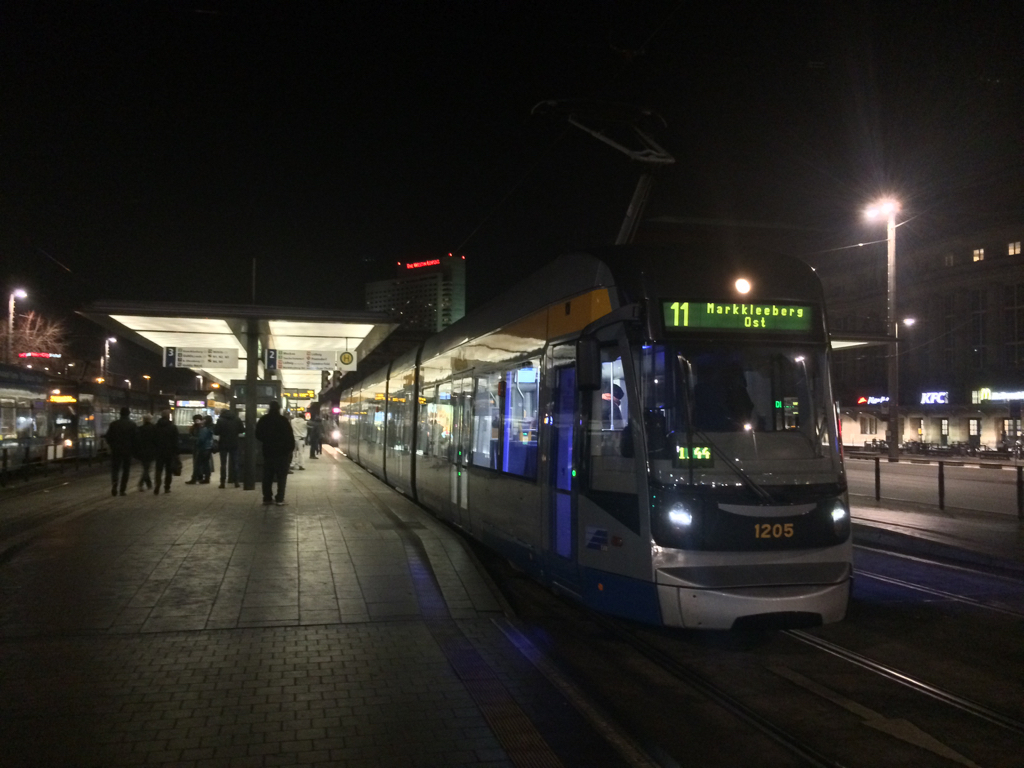
Standing at Platform 2 with Turn 1144 for the 11 pm interchange node, note that my tram is actually partly on the pedestrian crossing at the east end of the platforms. This is to allow the following Line 16 and Line 1 services – both with NGT8 cars – to be able to wait with, shall we say, most doors along the platform.
Even so, this arrangement also entails that certain lines actually need to stop ahead of the platforms…
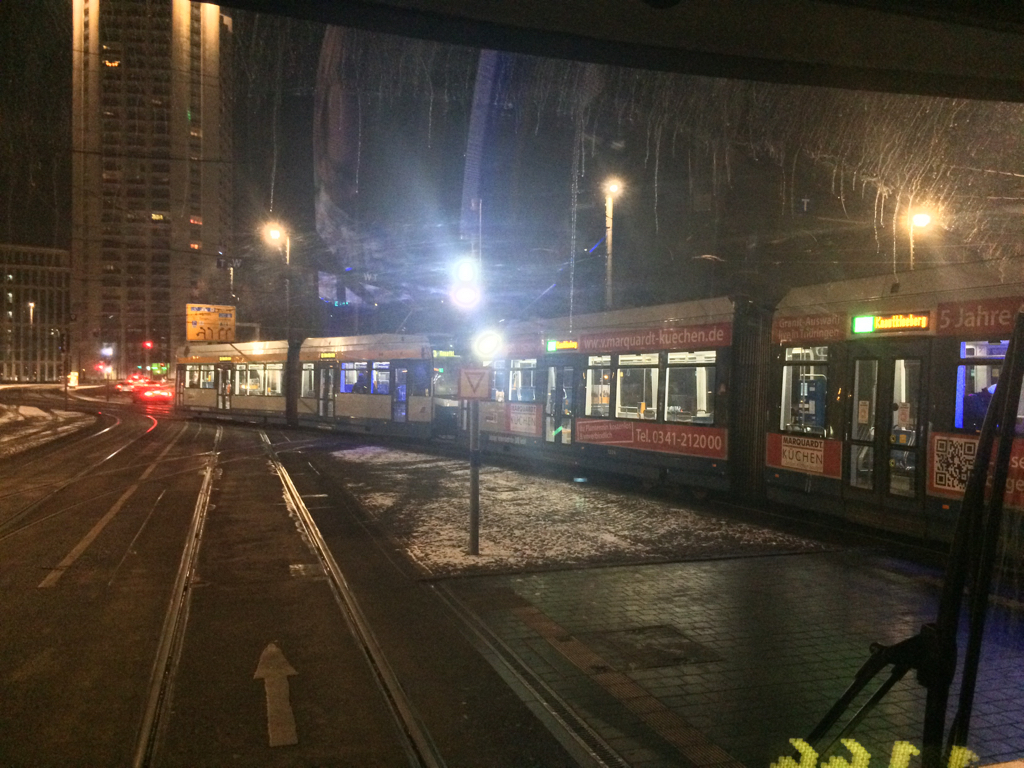
…in this case, Line 3 services for Knautkleeberg. Note that these, too…
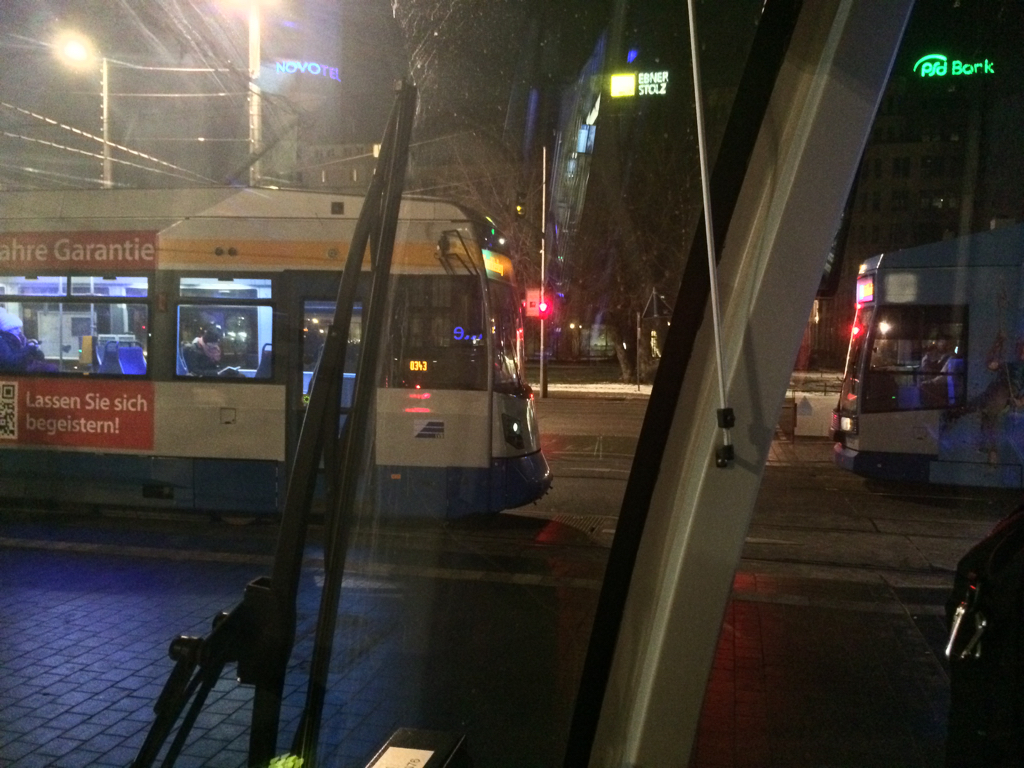
…need to stop partway on the pedestrian crossing, as does the Line 4 service for Stötteritz over at Platform 4.

At the 12.30 am interchange node…

…this example shows how, once again, Line 3 for Taucha has to stop ahead of the platform.
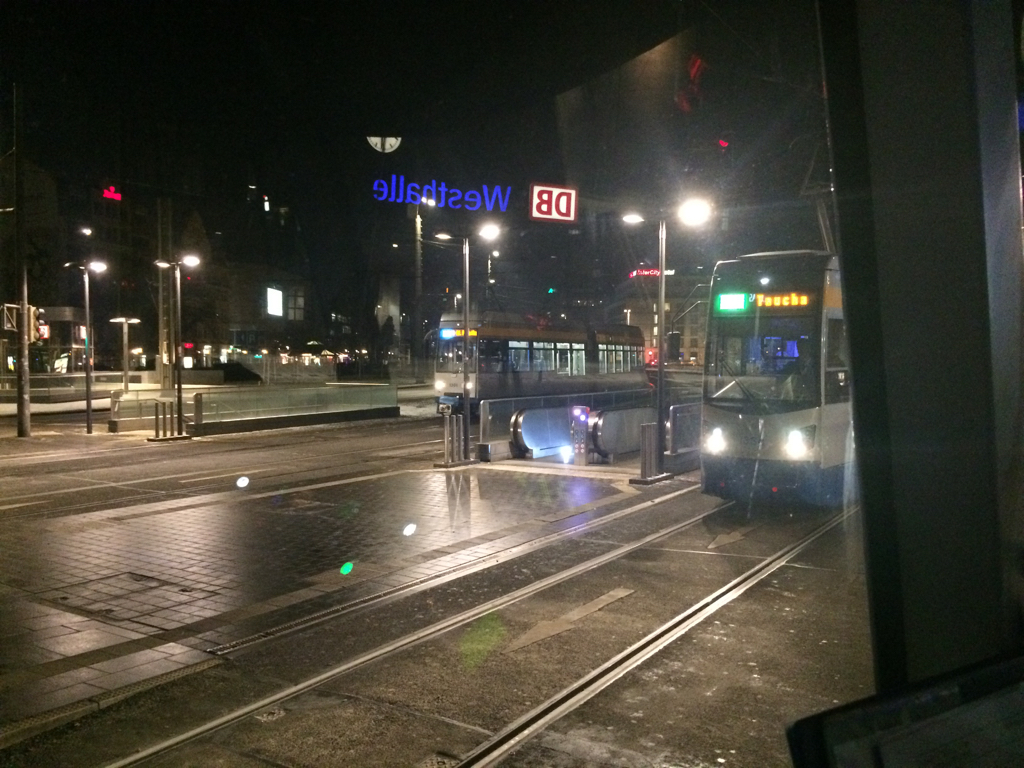
And ahead of Platform 4, note this Line 14 service waiting on the last position in the queue.
Our regulations for double stops such as Central Station outline that, whenever possible, double departures should be ensured, meaning that two services should attempt to depart simultaneously to clear the platforms for the next services. Furthermore, they say that any services on the third or fourth position – as during the interchange nodes – need to stop anew once they are alongside the relevant platform to ensure a "proper" station call.
Which is to say that as per the lineup outlined above, Line 1 services at Platform 1, Line 1 and 3 services at Platform 2, Line 4 and Line 3 services at Platform 3 and Line 7 and Line 14 services at Platform 4 need to call twice.
It's also common practice for interchange node services to depart only following a starting signal from Control. This can be provided either via radio or through text messages posted on the ITCS terminals, which can read "Depart as scheduled", "Safe trip" or similar, depending on who's at the control desk!
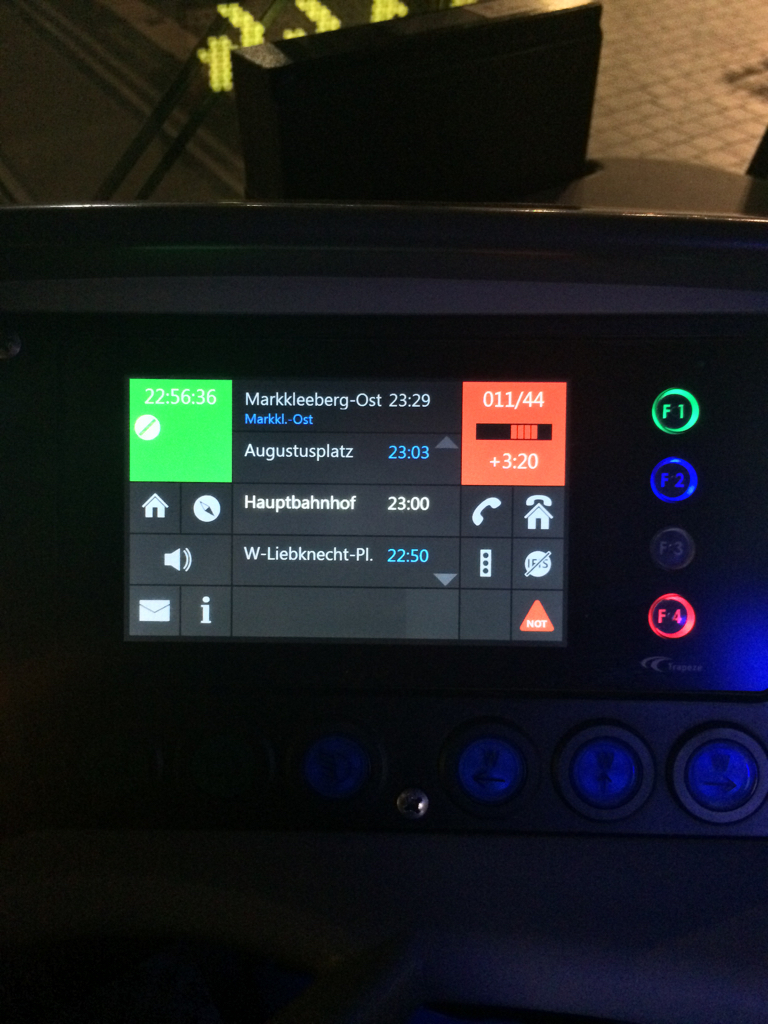
In this example, my scheduled arrival at Central Station was at 10.53 pm, with departure scheduled to occur in 3.20 minutes. As all services had arrived within the expected time frame, we did depart at 11 pm, as planned.
If any services earmarked for participation in the interchange node are delayed in arrival, one option which Control may invoke is to notify all waiting services of the pending arrival, or to explicitly delay the starting signal until all services scheduled to take part have arrived.
Of course, it is not possible to do so for indefinite lengths of time, so there may be situations where drivers may need to make the seemingly heartless decision in favour of the well of those already aboard and against any dawdling "latecomers" in order to reach the interchange node with at least part of the scheduled dwell time remaining. After all, no-one really gets stranded at night, as beginning at 1.11 am, night buses bridge the gap till tram services resume in the early morning.
It's also advisable that if you are delayed due to, for example, technical reasons or traffic holdups, you should notify Control when your delay is beginning to exceed five minutes as the defined dwell time at Central Station is between five to seven minutes – depending on individual lines. As I mentioned, it is not possible to delay the start signal indefinitely, so in such cases, Control may also decide that you should skip the interchange node, and can define ad-hoc interchanges with at least one of the other participating lines at a different location. Such operational orders are commonly forwarded through text messages to the ITCS terminals, during which process the individual timetables for the relevant services can also be adjusted for the additional dwell time.
Well, I believe that's everything I think can be said about this procedure, but do feel free to ask any questions you might have!
-
 1
1




2 Comments
Recommended Comments
Create an account or sign in to comment
You need to be a member in order to leave a comment
Create an account
Sign up for a new account in our community. It's easy!
Register a new accountSign in
Already have an account? Sign in here.
Sign In Now